-
 Bitcoin
Bitcoin $118100
-0.44% -
 Ethereum
Ethereum $3585
5.43% -
 XRP
XRP $3.434
5.65% -
 Tether USDt
Tether USDt $1.000
0.02% -
 BNB
BNB $743.8
3.89% -
 Solana
Solana $178.7
3.84% -
 USDC
USDC $1.000
0.03% -
 Dogecoin
Dogecoin $0.2381
12.81% -
 TRON
TRON $0.3270
3.62% -
 Cardano
Cardano $0.8315
4.93% -
 Hyperliquid
Hyperliquid $44.51
-4.42% -
 Stellar
Stellar $0.4710
1.52% -
 Sui
Sui $3.896
-2.51% -
 Chainlink
Chainlink $18.09
6.98% -
 Hedera
Hedera $0.2681
9.31% -
 Bitcoin Cash
Bitcoin Cash $516.7
4.83% -
 Avalanche
Avalanche $23.95
6.96% -
 Shiba Inu
Shiba Inu $0.00001490
5.67% -
 UNUS SED LEO
UNUS SED LEO $8.966
0.80% -
 Toncoin
Toncoin $3.294
4.39% -
 Litecoin
Litecoin $105.4
4.69% -
 Polkadot
Polkadot $4.356
5.30% -
 Uniswap
Uniswap $10.29
17.25% -
 Monero
Monero $327.9
-3.04% -
 Bitget Token
Bitget Token $4.942
4.33% -
 Ethena USDe
Ethena USDe $1.001
0.08% -
 Pepe
Pepe $0.00001348
2.17% -
 Dai
Dai $1.000
0.02% -
 Aave
Aave $320.8
0.58% -
 Bittensor
Bittensor $411.8
-4.07%
Who has applied for a spot Ethereum ETF?
A spot Ethereum ETF offers direct exposure to ETH by holding the actual cryptocurrency, providing investors with a regulated and secure way to access Ethereum's price movements without managing digital assets themselves.
Jul 17, 2025 at 10:56 pm
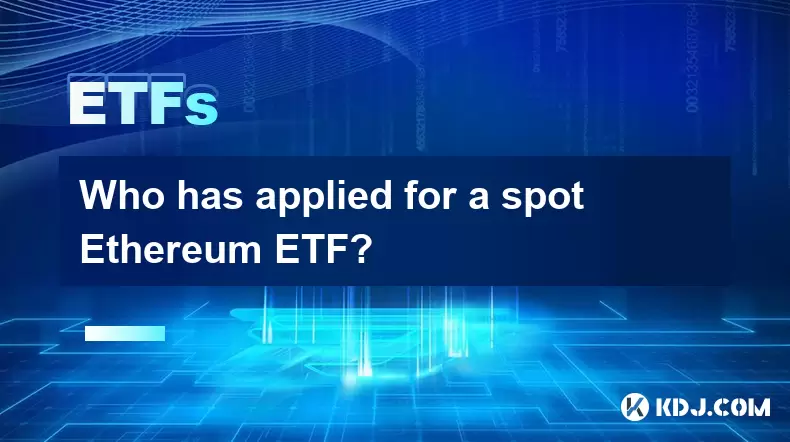
What Is a Spot Ethereum ETF?
A spot Ethereum ETF refers to an exchange-traded fund that directly holds Ethereum (ETH) as its underlying asset. Unlike futures-based ETFs, which derive their value from Ethereum futures contracts, a spot ETF is backed by actual ETH holdings. This structure provides investors with more direct exposure to the price movements of Ethereum without the complexities associated with holding and managing digital assets themselves.
Investors who are interested in gaining access to cryptocurrencies through traditional financial instruments often look toward spot ETFs as a regulated and secure alternative. The demand for such products has surged following the approval of similar instruments for Bitcoin, prompting several financial firms to submit applications for Ethereum-based ETFs.
Which Companies Have Submitted Applications?
Several major financial institutions have already filed proposals with the U.S. Securities and Exchange Commission (SEC) to launch a spot Ethereum ETF. Among them, the most notable applicants include:
- BlackRock: As one of the world’s largest asset managers, BlackRock submitted an application for an Ethereum ETF shortly after filing for a Bitcoin ETF. Their proposal leverages the same infrastructure used for their iShares Bitcoin Trust.
- ARK Invest: Known for its innovative ETF strategies, ARK has partnered with 21Shares to file for multiple crypto ETFs, including one for spot Ethereum.
- Fidelity Investments: Fidelity Digital Assets has also entered the race by submitting documentation for a spot Ethereum ETF, mirroring their earlier efforts with Bitcoin.
- Grayscale Investments: Although Grayscale initially pursued a futures-based ETF route, they have since updated their filings to include a spot Ethereum ETF, aiming to convert their existing Ethereum Trust into an ETF format.
- VanEck: VanEck, a seasoned player in the ETF market, has filed detailed paperwork outlining their plans for a spot Ethereum ETF, emphasizing compliance and investor protection.
These entities represent a broad spectrum of institutional interest in Ethereum and highlight the growing acceptance of cryptocurrencies within mainstream finance.
Regulatory Challenges and SEC Stance
The U.S. SEC has historically been cautious about approving spot crypto ETFs due to concerns around market manipulation, custody solutions, and investor protection. While it approved the first Bitcoin spot ETF in early 2024, the regulatory environment for Ethereum remains uncertain.
Key points raised by the SEC during previous reviews include:
- Market Integrity: The commission has expressed concerns over whether the Ethereum spot market is mature enough to resist manipulation.
- Custody Standards: Ensuring secure storage of Ethereum assets is critical, and the SEC expects robust custodial frameworks.
- Disclosure Requirements: Applicants must provide clear, transparent information regarding fees, risks, and operational mechanics.
- Compliance with Existing Laws: All ETFs must adhere to securities laws, including those related to fraud prevention and reporting obligations.
Despite these hurdles, many applicants remain optimistic, especially given the precedent set by the Bitcoin ETF approvals, which signaled a potential shift in regulatory attitude.
International Developments and Other Jurisdictions
While much of the focus has been on U.S.-based applications, other jurisdictions have already made progress in launching Ethereum-related ETFs or ETPs (exchange-traded products):
- Canada: Several Ethereum ETPs are already listed on the Toronto Stock Exchange, offering investors exposure to spot Ethereum prices.
- Europe: Countries like Switzerland and Germany host a variety of crypto ETPs, including those tracking Ethereum, under frameworks provided by providers like 21Shares and WisdomTree.
- Brazil: Brazilian regulators have also permitted the listing of Ethereum ETF-like products, further expanding global access to the asset.
These international examples demonstrate that while the U.S. market may be lagging in approvals, there is a strong appetite globally for regulated Ethereum investment vehicles.
Technical Infrastructure Behind Spot Ethereum ETFs
Creating a spot Ethereum ETF involves significant technical and operational planning. Below are some of the key components involved:
- Custodial Services: A trusted custodian must securely store the Ethereum backing the ETF. Providers like Coinbase Custody and Fidelity Digital Assets have emerged as leading candidates.
- Creation and Redemption Mechanism: Authorized participants facilitate the issuance and redemption of ETF shares by exchanging Ethereum for ETF units and vice versa.
- Pricing and Tracking: The ETF must accurately reflect real-time Ethereum prices, typically referencing major exchanges or data providers.
- Auditing and Transparency: Regular third-party audits ensure that the amount of Ethereum held matches the outstanding ETF shares.
- Smart Contract Interaction: Some ETF structures may involve interacting with Ethereum smart contracts, requiring additional layers of security and oversight.
Each of these elements plays a crucial role in ensuring the ETF operates efficiently and maintains trust among investors.
Frequently Asked Questions
Q: What is the difference between a spot Ethereum ETF and a futures-based Ethereum ETF?
A: A spot Ethereum ETF holds actual Ethereum tokens, providing direct exposure to the asset's current price. In contrast, a futures-based ETF uses Ethereum futures contracts, which can deviate from the spot price due to factors like roll yield and contango.
Q: Why hasn't the SEC approved any spot Ethereum ETFs yet?
A: The SEC has not yet finalized approvals for spot Ethereum ETFs due to ongoing concerns about market manipulation, custody practices, and investor protections. However, recent Bitcoin ETF approvals suggest that the agency may be reconsidering its stance.
Q: Can I invest in Ethereum ETFs outside the U.S.?
A: Yes, investors in certain jurisdictions like Canada, Europe, and Brazil can already access Ethereum ETF-like products through local exchanges. These products are typically structured as ETPs or ETNs and are subject to regional regulations.
Q: How do Ethereum ETFs affect the price of ETH?
A: If approved, spot Ethereum ETFs could increase demand for ETH by making it more accessible to institutional and retail investors. This increased inflow may lead to upward pressure on the price, though market conditions and broader macroeconomic factors also play significant roles.
Disclaimer:info@kdj.com
The information provided is not trading advice. kdj.com does not assume any responsibility for any investments made based on the information provided in this article. Cryptocurrencies are highly volatile and it is highly recommended that you invest with caution after thorough research!
If you believe that the content used on this website infringes your copyright, please contact us immediately (info@kdj.com) and we will delete it promptly.
- Meme Coin Mania: BONK, FLOKI, and the Quest for Crypto Gold
- 2025-07-19 10:50:12
- Troller Cat Presale Surge: The Meme Coin That's Actually Good?
- 2025-07-19 10:50:12
- XRP Mining for Passive Income: Is It the Next Big Thing?
- 2025-07-19 10:30:12
- Neo Blockchain & ChainGPT: AI Revolutionizing Decentralized Applications
- 2025-07-19 10:35:13
- Altcoins, Ethereum, and SharpLink: A New Era in Crypto Investment?
- 2025-07-19 09:15:12
- Coin Shop Homicide: Guilty Verdict After Decade-Long Wait
- 2025-07-19 08:50:13
Related knowledge
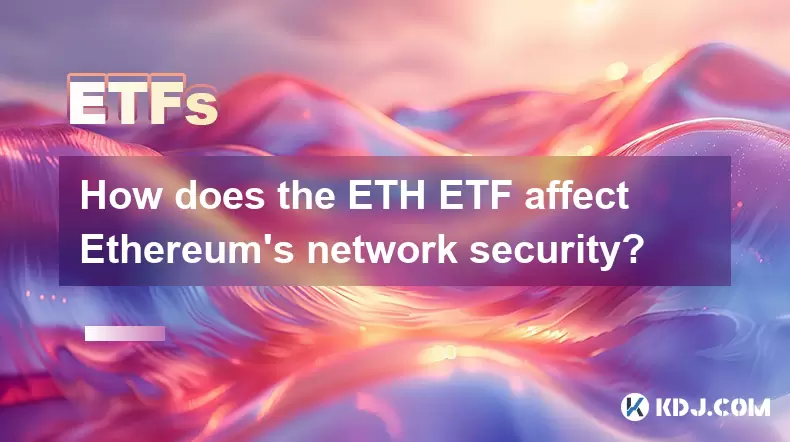
How does the ETH ETF affect Ethereum's network security?
Jul 17,2025 at 01:29pm
Understanding the ETH ETF ConceptAn Ethereum Exchange-Traded Fund (ETH ETF) is a financial product that allows investors to gain exposure to Ethereum ...
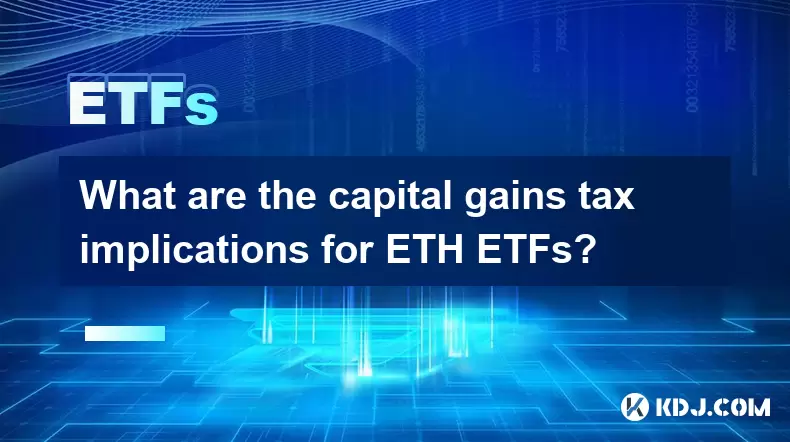
What are the capital gains tax implications for ETH ETFs?
Jul 18,2025 at 08:00am
Understanding Capital Gains Tax in Cryptocurrency InvestmentsCapital gains tax is a tax imposed on the profit realized from the sale of an asset that ...
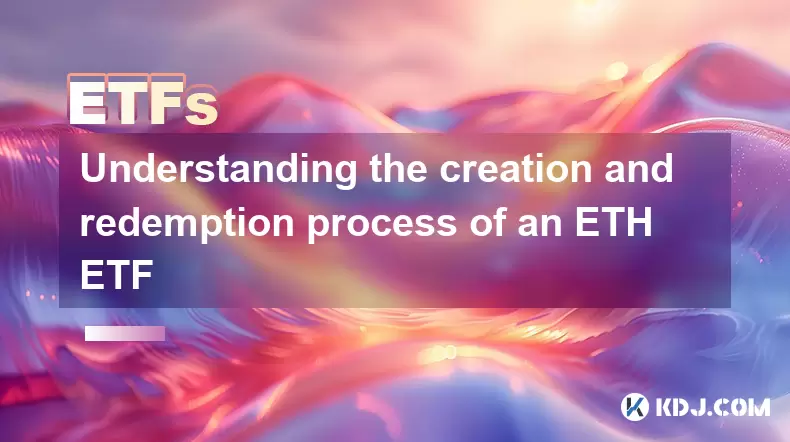
Understanding the creation and redemption process of an ETH ETF
Jul 19,2025 at 07:36am
What is an ETH ETF?An ETH ETF (Ethereum Exchange-Traded Fund) is a financial product designed to track the price of Ethereum without requiring investo...
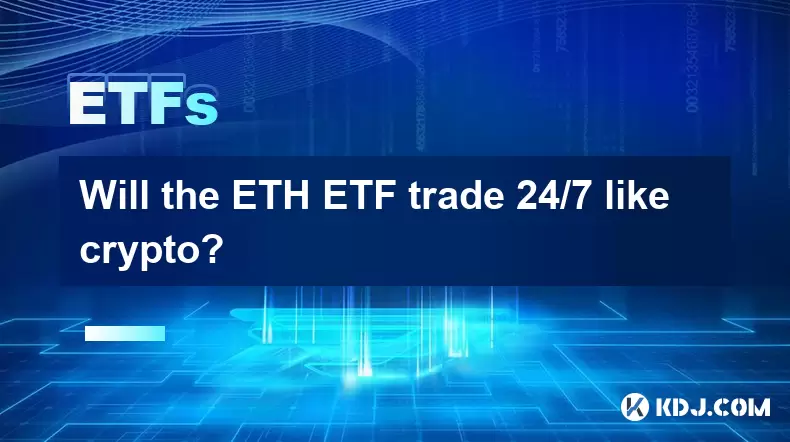
Will the ETH ETF trade 24/7 like crypto?
Jul 18,2025 at 10:00am
Understanding the ETH ETF and Its Trading HoursThe Ethereum Exchange-Traded Fund (ETH ETF) is a financial product that allows investors to gain exposu...
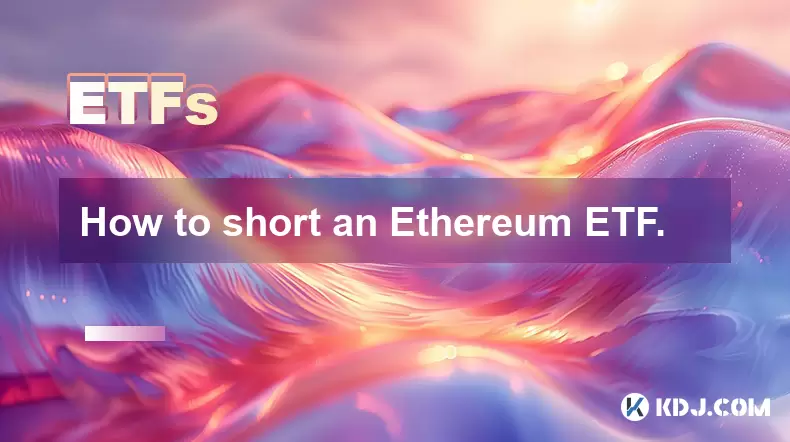
How to short an Ethereum ETF.
Jul 17,2025 at 05:43pm
Understanding the Concept of Shorting an Ethereum ETFShorting an Ethereum ETF involves betting against the price of Ethereum through a specific exchan...
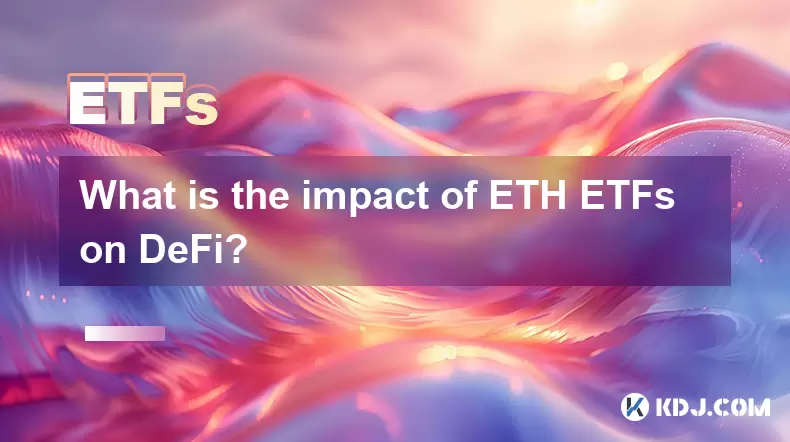
What is the impact of ETH ETFs on DeFi?
Jul 17,2025 at 11:07pm
Understanding ETH ETFs and Their Role in the Cryptocurrency MarketAn ETH ETF (Ethereum Exchange-Traded Fund) is a financial product that tracks the pr...

How does the ETH ETF affect Ethereum's network security?
Jul 17,2025 at 01:29pm
Understanding the ETH ETF ConceptAn Ethereum Exchange-Traded Fund (ETH ETF) is a financial product that allows investors to gain exposure to Ethereum ...

What are the capital gains tax implications for ETH ETFs?
Jul 18,2025 at 08:00am
Understanding Capital Gains Tax in Cryptocurrency InvestmentsCapital gains tax is a tax imposed on the profit realized from the sale of an asset that ...

Understanding the creation and redemption process of an ETH ETF
Jul 19,2025 at 07:36am
What is an ETH ETF?An ETH ETF (Ethereum Exchange-Traded Fund) is a financial product designed to track the price of Ethereum without requiring investo...

Will the ETH ETF trade 24/7 like crypto?
Jul 18,2025 at 10:00am
Understanding the ETH ETF and Its Trading HoursThe Ethereum Exchange-Traded Fund (ETH ETF) is a financial product that allows investors to gain exposu...

How to short an Ethereum ETF.
Jul 17,2025 at 05:43pm
Understanding the Concept of Shorting an Ethereum ETFShorting an Ethereum ETF involves betting against the price of Ethereum through a specific exchan...

What is the impact of ETH ETFs on DeFi?
Jul 17,2025 at 11:07pm
Understanding ETH ETFs and Their Role in the Cryptocurrency MarketAn ETH ETF (Ethereum Exchange-Traded Fund) is a financial product that tracks the pr...
See all articles

























































































